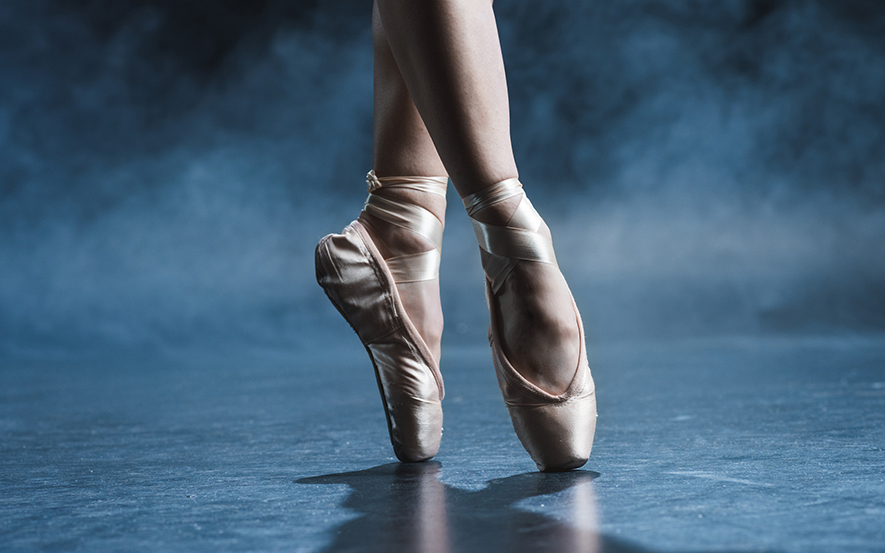Going on pointe for the first time is an exciting progression of your ballet training. This moment is the culmination of endless hours of training and preparing. However, there are many factors to consider when going on pointe.
A pre-pointe assessment is vital to ensuring that you are ready to take the next step in your ballet journey. A physical therapist will look at factors such as your technique, your foot and ankle flexibility, strength, postural control, core stability, turnout range, and more.
To learn more about pre-pointe assessments, read “Everything You Need to Know About Pre-Pointe Assessments.”
Choosing the right shoe for your foot based on your pre-point assessment can help you avoid unnecessary pain and possible injury while performing. Your physical therapist can make recommendations for you so you can perform your best.
During your Pre-Pointe Assessment
During your pointe assessment, your physical therapist will ask and assess many factors, such as:
- Your growth plates are still open,
- The shape and control of your forefoot, and
- Whether or not you have really high arches.
All of these factors will have an impact on your kinetic chain as you go on pointe. If your growth plates are still open, your bones will be much more moldable compared to an adult going on pointe. Growth plates are soft portions at the ends of bones that assist in bone growth. There are tissues and tendons attached to growth plates. If your growth plate or the tissues and tendons attached to your growth plate are injured, it can lead to further injuries down the road.
Foot structure wise, your physical therapist will want to know if you have a bunion, also known as hallux valgus. It is a bony bump that occurs when the top of the big toe moves closer to the smaller toes. If there is a bunion present, I like to utilize spacers in between your big and second toe to help maintain proper alignment of the first ray. This helps ensure that your body weight is being distributed through the shoe correctly.
The arch also matters. If your arch is collapsed- or overpronated- or if you have really high arches, your shoe will need to work to support you. For example, if your arches are high, you run the risk of really sinking into the shoe and pinching your Achilles tendon. The shank- or sole- of your pointe shoe needs to mold to your arch. Your physical therapist can make recommendations for shoes depending on your arch type and strength. We are looking to see if you can successfully get over the toe box and if there is any separation between your foot and the shank.
The Shoe
In the pre-pointe assessment, your physical therapist will specifically look at your ability to get over your toe box. The box should be fully parallel with the floor. A sign that someone is not able to control the box is if there is space under the box and I am able to slide my fingertips under the box. More specifically, we need to make sure you are fully getting over the big toe.
There are different pointe shoes to accommodate your foot structure and strength to help you get over the box. For example, if you have really long toes or a really strong forefoot, you may want a longer toe box. Longer toe boxes are generally harder to get over. Smaller toe boxes, while easier to get over, can be more unstable for certain foot structures. It all depends on your individual foot.
You want to get a pointe shoe that works functionally for you. A physical therapist that is skilled in shoe fittings can make a recommendation for you that will help you perform your best on the stage.
Are you about to go on pointe? Schedule an appointment with a dance specialist at Spooner today!

